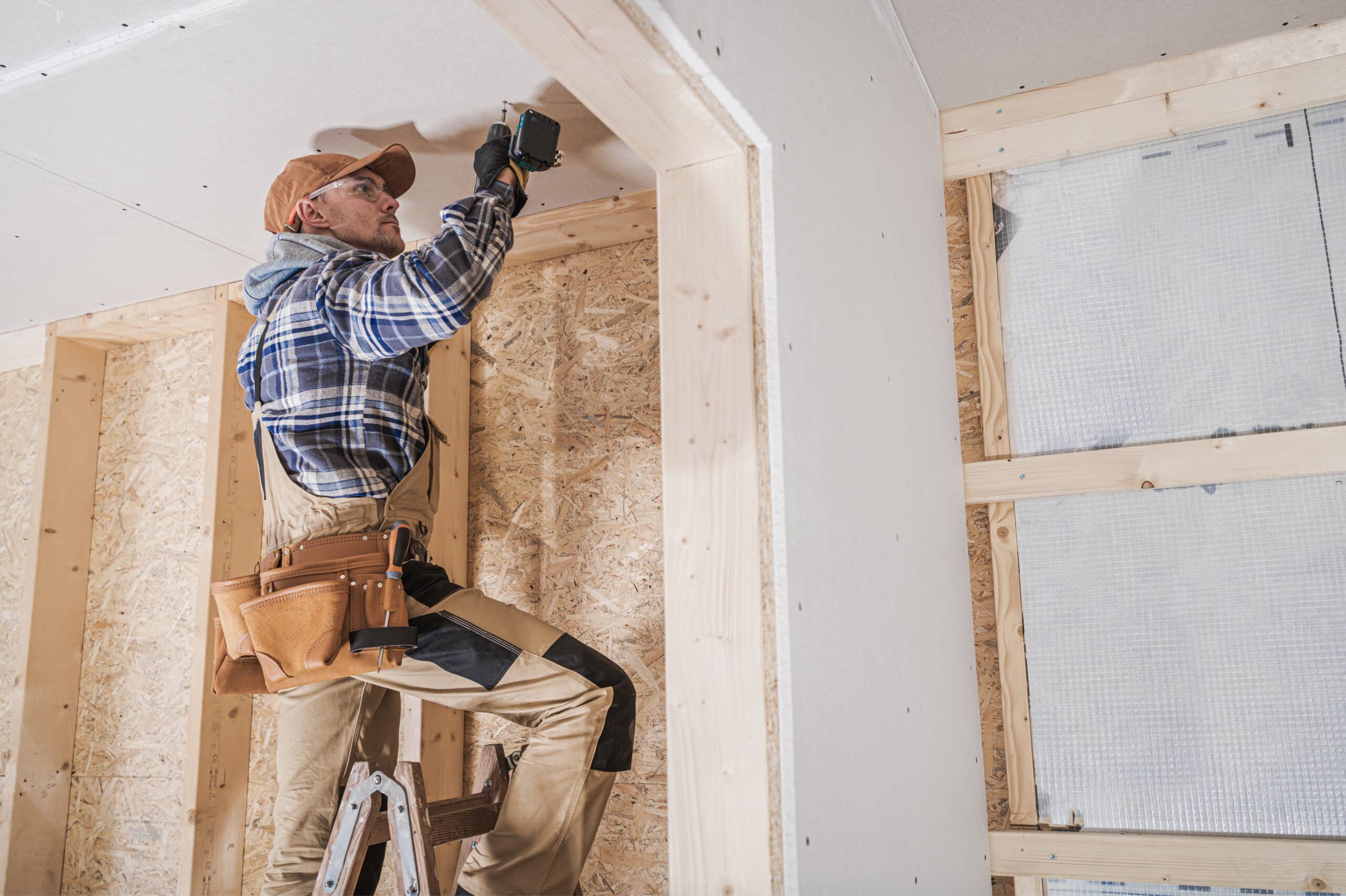Total Overview to Reliable and reliable Drywall Installment
Drywall installment is an important element of any building and construction or remodelling project, requiring a thorough strategy to make sure both efficiency and dependability. Comprehending the essential tools and strategies is vital, along with acknowledging typical mistakes that can lead to substandard results. By carefully preparing the area and implementing ideal practices, one can achieve a remarkable surface that stands the examination of time. It is necessary to check out the nuances of each action in the process, as they jointly contribute to the total success of the drywall installation. What specific methods can elevate your technique?
Necessary Tools for Drywalling
When beginning on a drywall installment project, having the right devices is important for attaining a professional surface. Crucial tools include a drywall blade, tape step, and a T-square, which are essential for exact dimensions and smooth cuts. A drywall lift is likewise very advantageous, particularly for ceiling installments, permitting for easier handling of heavy panels.
For attaching the drywall, a cordless drill and drywall screws are essential. The drill should be geared up with a drywall bit to make sure performance and precision. Additionally, a key device is the drywall saw, which promotes reducing about electrical outlets and various other obstacles.

In addition, safety equipment such as shatterproof glass and a dirt mask are important to make certain individual security during the setup process. Utilizing the right devices not just enhances the quality of the installation but additionally enhances the process, making the project a lot more reliable total.
Preparing the Area

Next, analyze the condition of the ceilings and walls. Fix any type of existing damage, such as openings, fractures, or peeling off paint, to make sure a smooth and even surface for drywall application. In addition, check for electric outlets, pipes lines, and HVAC ducts, noting their places to stay clear of problems throughout installation.
It is additionally crucial to gauge the area accurately, establishing the dimensions of the walls and ceilings to determine the ideal amount of drywall needed. Develop a detailed strategy that includes the design and alignment of the drywall panels.
Installment Techniques
Efficient installment techniques are important for attaining a professional surface in drywall jobs. Appropriate measurement and cutting of drywall sheets are essential actions. Constantly measure the wall room accurately, enabling for any type of electrical outlets or buttons. Use an energy blade for tidy cuts, racking up the paper face and breaking the board along the racked up line.
When hanging drywall, begin with the leading and job downward, ensuring that the long edge of the board is perpendicular to the framework. Safeguard the sheets with screws instead of nails, which give better holding power and reduce the threat of standing out. Place screws every 12 inches along the sides and every 16 inches in the area of the board.
For edges, use edge grains to accomplish sharp, clean edges. When setting up on ceilings, utilize a drywall lift or have a partner assist in holding the sheets in place (drywall repair). Preserve a space of regarding 1/4 inch over the flooring and ceiling to suit development and tightening
Ending Up Touches

Begin by applying joint tape over the joints. This can be either paper or fiberglass fit together tape, with paper being favored for its durability. As soon image source as the tape is in area, it's time to use the first layer of joint compound, also understood as mud. Use a 10 to 12-inch taping blade to spread the substance evenly over the taped joints, feathering the sides to blend with the bordering drywall.
Permit the compound to completely dry completely, typically 1 day. After drying, sand the surface gently with fine-grit sandpaper to eliminate any blemishes. drywall repair. Repeat the mudding and fining sand process, normally a couple of coats, ensuring each layer is flush and smooth with the drywall surface
Typical Blunders to Avoid
Numerous Do it yourself see fanatics run into challenges throughout drywall installment that can endanger the last results. One common mistake is failing to correctly determine and cut drywall sheets.
One more frequent error is improper attachment. Making use of too few screws or nails can lead to loosened drywall, while overdriving bolts can trigger the paper to tear, deteriorating the structure. It's crucial to keep constant spacing, normally every 16 inches, and to make sure that fasteners are flush with the surface.
In addition, not addressing moisture concerns prior to setup can result in mold and mildew growth and architectural damages. Always assess the setting and use moisture-resistant drywall in high-humidity areas.
Final Thought
Dependable and reliable drywall installment needs meticulous interest to information throughout the process. By making use of vital tools, preparing the room effectively, and adhering to find more finest techniques in setup strategies, a perfect finish can be accomplished. In addition, careful application of joint substance and tape throughout the finishing phase enhances toughness and appearance. Preventing usual blunders even more contributes to a specialist result, highlighting the relevance of accuracy and technique in successful drywall jobs.
It is crucial to discover the nuances of each action in the procedure, as they jointly add to the general success of the drywall installment.When getting started on a drywall installation task, having the right tools is important for attaining a professional finish.For attaching the drywall, a cordless drill and drywall screws are required.Appropriately preparing the area is necessary for an effective drywall setup.Efficient installation techniques are crucial for achieving a professional finish in drywall tasks.